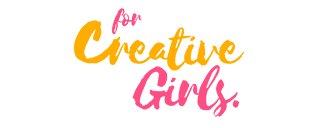Lack of emotional support has been associated with cognitive decline, and nothing speaks louder of emotional support and creative stress relief like safe spaces.
The goal of a safe space is to create an environment where you don’t feel threatened for showing up as you are. For creatives, this “showing up” is where creative confidence lies. Without this confidence, it’s easy to shrink and morph into different versions of what you are not. With shrinking comes inauthentic ideas and low-frequency innovative practices, and eventually severe burnout.
It’s easier to fall into this rut as a freelancer. You’re constantly at the forefront of decision making, playing the roles of executioner, think tank, critic, and support system all at once. Before long, the dreaded burn out cloud hovers over everything you do.
If you constantly want to ride the wheels of innovation without suffering severe breakdowns, creating a safe space need to be relieve you of creative stress should be top on your list.
In this article, we’ll analyze how to create safe spaces that help you successfully deal with the creative stress and achieve maximum productivity.
Why Safe Spaces?
In 1940, Kevin Lewis, a social psychologist, coined the concept of safe spaces as an environment that engenders the giving and receiving of honest feedback, and addressing assumptions and biases without judgment. Later in the 1960s, the now LGBTQ community took up the concept in order to protect its members from sexist and homophobic behavior, but also to insist on their seamless integration into society.
Safe spaces are known for three things, regardless of community or organization: vulnerability without judgement, freedom of expression without fear or condemnation, and a network of emotional support for the difficult days.
This freedom and vulnerability is many times the juice of innovation and other times a therapeutic antidote to creative stress
Connecting to Relieve Creative Stress
Recent research on how social connectivity can birth new ideas highlights how creative interaction on social media could encourage novel ideas.
“We confirmed that following highly creative peers indeed helped people generate novel ideas themselves—the intuition being that if you bump up against out-of-the-box ideas, chances are higher that you will be able to combine your own ideas with ones you didn’t originally think of.”
The results of this research places a premium on interaction whether physical or virtual as a catalyst for new or improved ideas. Now to understand how this can reduce your stress levels while creating, you’ll need to understand how your brain interprets stress. A related article by Harvard Business review explains how the stress hormones are designed to stiffen our backs for battle. So once it’s triggered by perhaps excessive work, your brain goes into survival mode, and in this state creativity as you know it is blocked out. This is because that prolonged period of stress pushes your brain to want to choose flight over exploration. So your creativity is shut down.
However, this is what happens when you choose to connect, virtually on social media or physically in the midst of the stress. You regain control. Choosing to disrupt the activities rather than slugging through a rather discomforting activity that sends threat and anxiety alerts to your brain, puts you back in control, because you chose it. Irrespective of what the outcome will be, that singular disruptive choice empowers you. Jonathan Fields explains this in his podcast that “When we are the disruptors, it’s still scary, but we have a sense of agency and a powerful connection to a reason.” The resultant effect is this, your Prefrontal cortex – seat of proactive decisions and control – is spiked thereby re-opening your creativity. So, yes, it’ll be easy at this point to spot or take in a new idea and put it to use for better productivity at work.
Related Article : Boost Your Productivity With Breaks
Environments that Relieve Creative Stress
Ever heard of the legendary Frank Epperson, perhaps not, but you must know about popsicles, a drink on a stick. At age 11, Frank Epperson created the largest consumed ‘drink’ by mistakenly leaving sugary soda substance on stick overnight. If you read the full story, you’ll see how he goes to explore this resultant mouth-watering product, sell it to friends and eventually patent it. What’s the point of this story? His confidence. Without this fearless pursuit of creativity we may have passed on one of the greatest inventions in the fast food industry.
Creating an environment where you can fearlessly pursue your creative idea cannot be over flogged. Like it was stressed in the HBR article earlier mentioned, the part of your brain that allows for creative splurge, can be shut down by fear or anxiety, leaving you stressed and unproductive. It is no news that your environment, whether internal or external, can play a huge role in spurring or abating this fear.
The innovation engine can be divided into two influencing groups, according to Stanford Professor Tina Seeling – Internal and External, then into 6 wheels namely; Knowledge, Imagination, Attitude, Resources, Culture and Habitat. The first three are internal and the last three external.
For a well functioning internal environment, the wheel of your imagination has to be oiled frequently, as well as the knowledge in your area of expertise. But most importantly, you need to be brutally aware of and willing to reevaluate how you perceive failure, achievement, and other aspects of life in order to give your creative confidence enough internal drive. To accomplish this, take a moment to reflect on your core values, develop personal character traits that align with those values, and strive to increase your expertise.
To further maintain that creative balance, you should create a work environment properly aligned with what you’re building internally. For instance, some creatives have stickers with affirmative words around their work space to provide them with the needed motivation they may have received from a colleague or a superior. Some other creatives keep journals to help with that. Whatever method you use, it is critical to create an environment that both reassures and inspires your creative confidence.
Disconnect To Relieve Creative Stress
Our autonomic nervous system has a parasympathetic side. It’s advisable to harness this side after prolonged periods of work and output in order to repair the nervous system and engage other parts. In English, REST IS PRODUCTIVE. Yes, everyone tweets or reposts it on their stories, but have you truly unplugged from work if you’re feeling guilty about not working half the time? Rest is a safe place to help you relieve creative stress. Don’t wait for the long weeks of vacation you get once or twice a year; make rest a habitual practice. A walk down the street or around your property, a brief moment to admire nature’s beauty, whatever you have access to exploring, take it and enjoy every moment.
Benefiting from Support Networks & Safe Spaces
As a creative person, the pressure of constantly putting yourself out there can be overwhelming, but it is comforting to know you’re not the only one going through this. Support networks for creatives don’t just provide you with solutions or advice; they are the constant reminder that you are not alone. So here’s an inexhaustible list of some platforms built to help ease the pressure you experience while creating
- Side Hustler’s Perspective Podcast
- The Monday Morning Club
- NABS for advertisers and media personnel
- The Association of Illustrators, AOI
- Girls on Design
- Creatives Lives in Progress
- Film Fatales for Female Creators
- Black Female Photographers and so many more
And of course, our very own community, for female creatives around the globe. For Creative Girls
The whole point of this is to remind you that you don’t have to bear the weight of your creative journey alone when you can harness these resources and support network for your growth and productivity. It’s time to create freely without fear of burnouts or creative stress!





